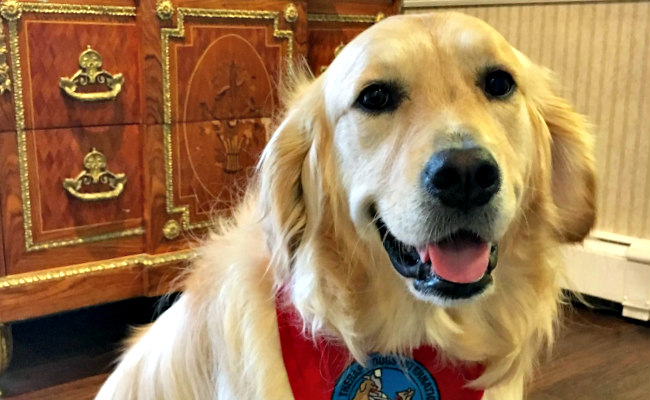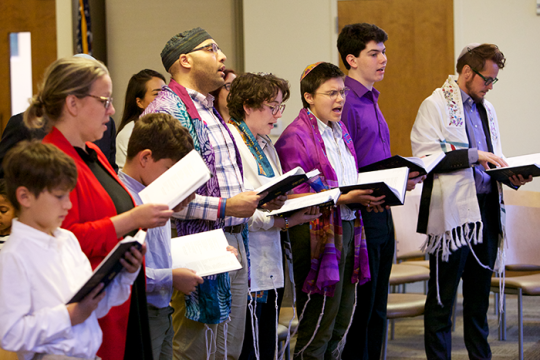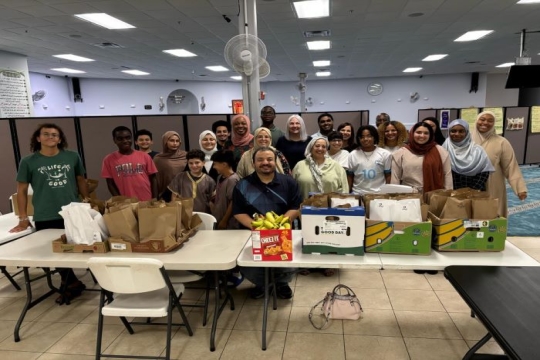
I’m a bit of an insomniac, partly due to the amount of time I spend, even in my sleep, dreaming up ways to engage young families. As president of a small congregation, it’s a constant challenge to offer excellent speakers and programs that motivate more than just us die-hard, longtime regulars to attend Friday night services.
Last October, I attended the Union for Reform Judaism’s valuable day of learning, “How Successful Congregations Embrace Change,” where we learned about Harvard Professor Marty Linsky’s view on the value of using the language of experimentation to reduce the stakes in trying new ideas:
“Through experimentation, you are testing a hypothesis in an effort to determine whether or not your hypotheses is correct. Whether your hypothesis turns out to be correct or incorrect, your experiment cannot fail, since the entire point was to test a theory out and see whether it works or not.”
The idea of trying new ideas by viewing them as experiments made sense to me. As the URJ facilitators explained, there are big experiments, and then there are smaller experiments, when not everything is on the line. Other advantages, they said, are that we’re able to make mid-course corrections and tweaks, and most important to me, “There is no such thing as a failed experiment. We are testing a hypothesis, and what we learn is valuable.”
After that day of learning, I asked my temple board for their ideas to help attract young families, and a younger board member, Peter Ginsberg, spoke to me after the meeting had adjourned, offering to bring his family’s golden retriever to a Family Shabbat dinner. “That will get the kids,” he said.
I was a bit foggy on the details of how it would unfold, but I accepted his offer on the spot, telling myself that this qualified as a small experiment, our second one for a Family Shabbat.
The first Family Shabbat experiment we’d tried in November, Family Shabbat: Soup and a Story, was pulled together quickly, with only a few days to publicize it. Rabbi Goodman typed up Shabbat blessings for the dinner, I cooked two pots of chicken soup with matzah balls, and my daughter baked mini challot and crafted pretty Shabbat candlesticks out of painted paper cups. The result was a welcoming ambience, good food, and a successful recitation of the Shabbat blessings before we went into the sanctuary for services. It was a good first try, though not a complete success.
For our second experiment, Family Shabbat: Pasta Dinner & Meet Betsy!, Peter, Melanie, and their children Jack and Emma, both recent b’nai mitzvot, brought Betsy the Therapy Dog to our synagogue.
At a typical Friday night Shabbat service on a cold night in January, we sometimes count the Torah as part of our minyan. But this Shabbat, the Social Hall gradually filled with congregants for dinner. We’d shifted some variables: I had a reserve of newfound energy from using two simple words: “Order in.” We’d also had ample time to publicize the event. My daughter baked mini chocolate challot this time, and the reusable paper cup candlesticks were ready for their second initiation.
Looking back, I believe the catalyst to the experiment’s success was Rabbi Goodman’s on-the-spot decision to ask Peter and his family to tell us about Betsy in the sanctuary.
Like the pied piper, Betsy led us cheerfully into the sanctuary, and as Peter walked up on the bimah with her, the younger kids automatically followed.
As a puppy, Betsy had shown all the attributes of a Therapy Dog. In fact, when Betsy took the required test to become a TDI Certified Therapy Dog, she passed with flying colors! The Ginsberg family is now happily committed to sharing Betsy in all sorts of settings where she can benefit others, including stroke victims and children with autism.
When Emma Ginsberg stood on the bimah to talk about Betsy, even the adults around me were visibly moved by her words. She told us about the time a non-verbal boy lay down beside Betsy, and when Betsy licked the boy’s face, he made kissing sounds with his lips in response. She movingly described how his mother began to cry, overcome with emotion seeing her child do this for the first time.
The result of this second experiment was having members attend who aren’t Friday night regulars, and who seemed glad they’d made the effort to be there. Maybe it was Betsy, or maybe it was the heartfelt words about her that ushered in a communal Shabbat feeling of goodness and joy. In my book, she’s Betsy the mitzvah dog, and what the Ginsbergs are doing is tikkun olam.
Still, despite this success, I’m holding onto my notes about using the language of experimentation – because I’ll continue to lie awake at night, dreaming up our next one!
Related Posts

Collaboration and Connection Power Small Congregations

How URJ Congregations Spark Change and Innovation

